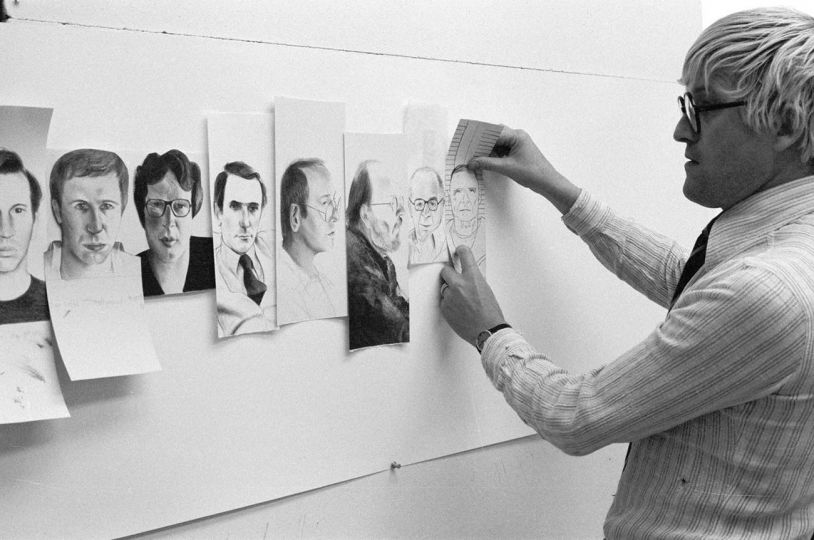Thierry Maindrault’s Monthly Chronicle
With the early arrival of spring, I suggest this time to get away from the incongruous behaviour of the exponential world of Photography. If, for a change, we talked a little about photography, about the photographic image, that goes without saying.
The photographic image boils down to a perception of sight based on the natural impact of light. It does not matter whether it comes from a reflective support, from a light projection on a support, or from the filtration of this light through a translucent screen. It is accepted that the qualification of photography applies when the image restored to itself was conceived from one, or several, light rays. For today, our necessary technical concept fundamentals will end there.
My point concerns the difference, from skirmishes to sometimes open war, between analogue or digital solutions, when capturing, manipulating, storing and the restitution of images created with light. To do this, it is essential to understand how radiation is perceptible by a biological structure. How waves of different lengths are received and deciphered by a biological cell. It should be noted that all molecular structures, from the infinitely small to gigantic, are sensitive and capable of reactions when they encounter a wave coming from the almost infinite number which navigates the universe.
For sight, many living species have eyes. To put it very simply, the wave hits a cell which transmits a flow to brain cells which analyse, exchange and amalgamate to reconstruct what we call an image. The principle is the same for all waves, even invisible ones. This is the case for sound waves, various classes of radiation, etc. This introduction is essential to fully understand what follows, which is based on an essential element: the brain.
In the case of so-called analogue reproductions, technology will strive to transfer the action of the waves as faithfully as possible through physical interpreters to our brain. This will be an optical lens, a silver salt and some chemicals, for one of the examples known by all. But sight is not the only thing concerned. For music, an instrument, a microphone and an engraved wax wafer will be used for our hearing sensors. Now, technological developments allow restitutions of very high quality and often adapted to very precise intellectual use. The initial vibrational modulations are continuous and always propagate and transfer continuously, without fragmentation.
Which is not at all the case with the digital process. This technique, often called logic, consists of splitting the waves to reduce them to temporal and qualitative sequences limited to only alternatives. These are limited to zeros and ones, whites and blacks, openings and closings. Medial positions, regulated flows, adaptations and other nuances are excluded. The process is based on logical constructions to deceive our brains which will have to reconstruct the impact of a wave with a supposed reconstitution of its natural state. No cries of outrage, the cerebral reconstruction of dissociated waves has existed for a very long time, the print frame and pointillism are part of this obligation to reconstruct from fractured information. In this area too, the use of new and very sophisticated technologies offers us bases for interpretations that are much more efficient than our own physiological capacities.
The war of pixels against silver iodide, or of silicon against gelatin, has no reason to exist. In any case, the final result recorded by our memory can be interesting, if the photography is good of course!
No, the difference is elsewhere, and it does exist. However, it in no way deserves an ideological or even economic fight. This gap between the two results obtained is objectively located in the perception of the work and in the emotion that it can create. Because even if our brain reconstructs an unstructured wave to hide its splitting from us, the fact remains that this real splitting is well recorded by our eye. It should be noted that the loss of nuances is considerably accentuated by the mathematical compressions which are necessary for reasons of information storage. This mathematical compression inexorably destroys a large amount of pixelated information. Even with increasingly efficient algorithms, it is almost impossible to reconstruct the original information that the brain must then interpret to imagine the original artwork.
This is how the mechanical transfer of the wave, even if it is slightly eroded, guarantees fluidity and flexibility hitherto unmatched by digital files. Music lovers, like lovers of photographic artworks, all know that “vinyl” LPs and “barium” cotton sheets best preserve the sensations delivered by an artwork (once again, a real work, of course). The light touch of a speckled sword or the edge of a sharpened sabre must be well suited to the results sought in the construction and creation of an image. The choice must take into account the use of the image, the speed of its implementation, its difficulties of production and the many other criteria of a competent photographer.
There remain two points on which I think that everyone must reflect before they make any statements thinking themselves as knowledgeable, or more sometime, claiming to be expert.
The first would assert that the digital approach to photography, with the use of software, each more wonderful than the last, would allow creators to finally realize the works of their dreams. Some allege that this was technically forbidden to them before. I think I can claim that these creators have shoved their finger in the eye, in addition to a short memory, which is hardly practical for both analogue and digital shooting. Colleagues did not wait for the Messiah to obtain original and sublime artworks. Denis Brihat’s famous onions, the triple solarizations that I was able to achieve and many other creations by authentic photographers , demonstrate that pixel manipulation, as interesting as it is, is certainly not the only panacea.
The second point concerns the distribution of images to offer them to as many people as possible, which seems very laudable to me. Digital technology allows everyone to see digital reconstructions of images on their smartphone or computer screen. There are all these files circulating in very complex networks linked together by enormous energy-consuming boxes dotted around the planet. It’s no longer about a finger; but, a wrench in the gears. For the reasons mentioned above, the photography reproduced in this context remains extremely poor. On a technical level, it is objectively unavoidable. A phone screen will never be able to offer, to the human eye, a photograph designed for a print, known as “80/100”. Even for a big screen called “5K” or more, it is a challenge. The other aspect concerns us as photographers. While we have sometimes spent several hours (I’m not talking about slackers), or even several days, creating a work, how can we let it go into the digital circuits? We know very well that the restitution, at the end of the chain, will be appalling. the worst of this nonsense is found in the “internet” sites of die-hard colleagues, working only with film (that is to say analogue), who offer for sale, on their personal website, their masterpieces certified non-polluted by a digital operation.
It’s been a while since common sense seems to have abandoned us. But, it is not the analogue or digital technologies which cut of your nose to spite your face in photography. The fat egos of lot pseudo-photographers seem to me to be, by themselves, gifted enough to kill our works.
Thierry Maindrault, April 12, 2024
your comments about this chronicle and its photography are always welcome at
















